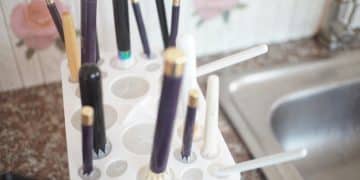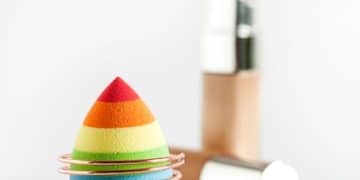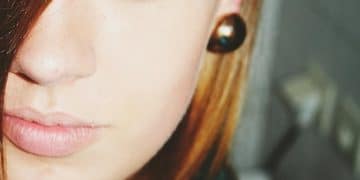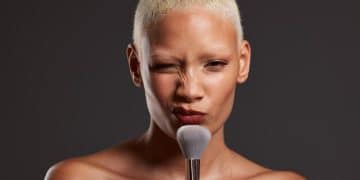How to Choose the Right Makeup Brushes: Essential Tools Guide
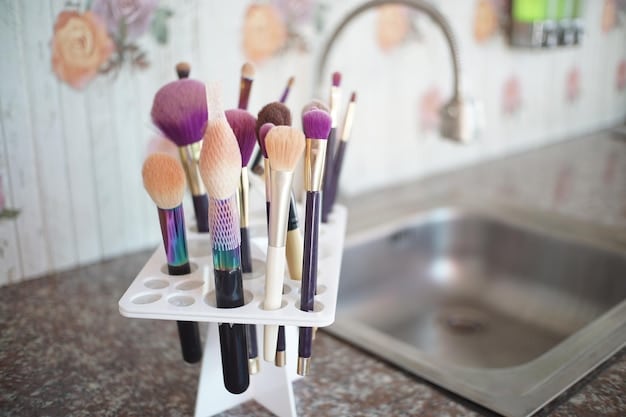
How to choose the right makeup brushes involves understanding different brush types, materials, and shapes. This guide offers insights into selecting essential tools for flawless makeup application, enhancing your beauty routine.
Navigating the world of makeup can be both exciting and overwhelming, especially when it comes to tools. **How to choose the right makeup brushes** is a common question, and this guide aims to simplify the process. From understanding the different types of bristles to knowing which brush suits which product, we’ll break down the essentials for a flawless makeup application. Discover how the right tools can transform your routine and elevate your look!
How to Choose the Right Makeup Brushes: A Guide to Essential Tools
Embarking on a makeup journey requires the right tools, and makeup brushes are indispensable. Understanding the nuances of different brush types, materials, and shapes can significantly enhance your application technique. Let’s delve into the specifics of how to choose the right makeup brushes.
Selecting the correct tools makes the application smoother and more precise. This section will cover the fundamental aspects of makeup brushes and provide a comprehensive guide to assist you. From natural to synthetic bristles, each has its unique characteristics and purposes.
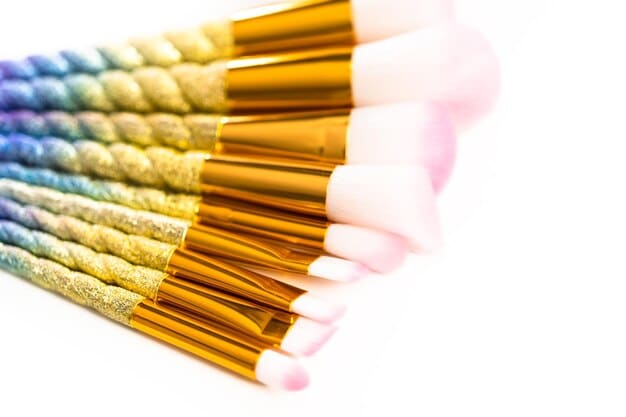
Understanding Brush Materials
The material of a makeup brush significantly affects its functionality and how it interacts with different products. Primarily, there are two types of brush materials: natural and synthetic. Each comes with its own set of advantages and best uses.
- Natural Bristles: Derived from animal hair, these bristles are porous, making them excellent for picking up and distributing powder products evenly. They tend to be softer and blend products seamlessly into the skin.
- Synthetic Bristles: Made from nylon or other synthetic materials, these bristles are non-porous, making them ideal for liquid and cream products. They don’t absorb as much product, resulting in less wastage and easier cleaning.
- Hybrid Blends: Some brushes combine both natural and synthetic fibers to provide a balance of both worlds—offering excellent product pickup and smooth application for a variety of makeup formulas.
The choice between natural and synthetic bristles often depends on the type of makeup you use most. Natural bristles work best for powder-based products, while synthetic bristles are versatile and suitable for creams, liquids, and powders alike.
Essential Makeup Brushes for Your Collection
Building a makeup brush collection can feel daunting, but starting with the essentials is a smart approach. Having a curated set of brushes will allow you to execute a variety of makeup looks without overwhelming your space or your budget.
Essential brushes include those for foundation, concealer, eyeshadow, blush, and powder. Each type has different shapes and sizes optimized for specific application techniques, ensuring a flawless finish.
Foundation Brushes
- Flat Foundation Brush: Ideal for building coverage with liquid or cream foundations, this brush helps to achieve an even, streak-free base.
- Round Foundation Brush: Perfect for blending foundation seamlessly, especially in hard-to-reach areas like around the nose and eyes.
- Stippling Brush: Creates an airbrushed effect by stippling foundation onto the skin, suitable for both liquid and powder formulas.
Concealer Brushes
- Small Concealer Brush: Designed for precise application of concealer to blemishes, dark spots, or small imperfections.
- Fluffy Concealer Brush: Used to dust powder over concealer to set it in place and prevent creasing, ensuring long-lasting coverage.
Foundation and concealer brushes are indispensable for creating a flawless base. When thinking about **how to choose the right makeup brushes**, consider your preferred foundation and concealer types, and match the brush accordingly. Different brush shapes allow for precise application and blending.
Brush Shapes and Their Uses
The shape of a makeup brush often dictates its primary purpose and the kind of finish it provides. Different brush shapes are designed to cater to various aspects of makeup application, from blending eyeshadow to contouring the face.
Understanding the shape helps in selecting the most appropriate brush for your desired look. This not only optimizes the application process but also ensures that you achieve the best possible finish with minimal effort.
Tapered Brushes
Tapered brushes have bristles that come to a point, making them ideal for precise application. These brushes are often used for applying eyeshadow in the crease or contouring smaller areas of the face.
Angled Brushes
Angled brushes feature bristles cut at an angle, perfect for applying product along defined lines. They are commonly used for applying eyeliner, brow gel, or for contouring cheekbones with precision.
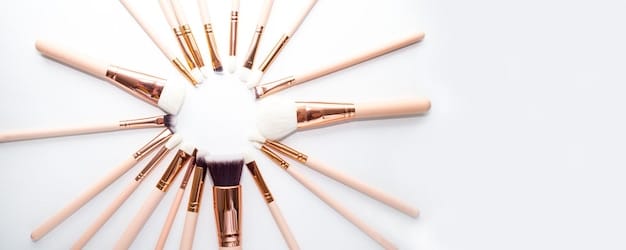
Brush shape is an important factor when considering **how to choose the right makeup brushes**. Tapered brushes are great for precision, while angled brushes help in creating defined lines. Pairing the right shape with the intended use makes application much easier.
Cleaning and Maintaining Your Makeup Brushes
Regular cleaning and maintenance of your makeup brushes are essential for several reasons. Not only does it keep your brushes in optimal condition, but it also promotes better hygiene, preventing the buildup of bacteria and product residue.
- Frequency of Cleaning: Makeup brushes used for liquids and creams should be cleaned at least once a week, while those used for powders can be cleaned every two weeks.
- Cleaning Solutions: Use a gentle brush cleanser or mild soap and water to clean your brushes. Avoid harsh chemicals that can damage the bristles. Baby shampoo is also an excellent and gentle alternative.
- Drying Technique: After washing, squeeze out excess water and reshape the bristles. Lay the brushes flat on a clean towel to air dry, avoiding direct sunlight or heat, which can damage the bristles.
Maintaining clean brushes is a key aspect of **how to choose the right makeup brushes**. Clean brushes ensure better makeup application and prevent skin issues. The right cleaning solutions and techniques preserve brush quality and longevity.
Budget-Friendly vs. High-End Makeup Brushes
When it comes to makeup brushes, there’s a wide range of options, from budget-friendly sets to high-end, professional-grade tools. The price often reflects the quality of materials, craftsmanship, and overall performance.
Determining which category suits your needs depends on your budget, frequency of use, and desired level of makeup artistry. Both budget and high-end brushes can deliver excellent results when chosen and maintained properly.
Budget-Friendly Brushes
- Affordability: Ideal for beginners or those on a tight budget, these brushes offer a cost-effective way to build a basic makeup kit.
- Quality Considerations: While they may not last as long as high-end brushes, many budget-friendly options provide decent performance and are suitable for everyday use.
High-End Brushes
- Superior Quality: Made with premium materials and expert craftsmanship, these brushes offer exceptional performance, durability, and a luxurious feel.
- Investment: Although more expensive, high-end brushes can be a worthwhile investment for makeup enthusiasts or professionals seeking precision and longevity.
Deciding **how to choose the right makeup brushes** includes considering your budget and makeup goals. Budget-friendly brushes are great for starting out, while high-end brushes offer superior quality and durability for more serious makeup artists.
Advanced Brush Techniques
Once you’ve mastered the basics of makeup application, exploring advanced brush techniques can take your skills to the next level. These techniques involve using brushes in innovative ways to achieve specific effects, from airbrushed finishes to sculpted contours.
Advanced techniques not only enhance your makeup looks but also allow you to experiment with different textures and dimensions. Experimentation helps improve and refine your artistic expression through makeup.
- Stippling: Creates a seamless, airbrushed finish by gently tapping the brush onto the skin, layering product without causing streaks or harsh lines.
- Contouring: Uses angled brushes to sculpt and define facial features, creating shadows and highlights that enhance structure and dimension.
- Blending: Applies multiple shades of eyeshadow seamlessly, using soft, fluffy brushes to blur the edges and achieve a gradient effect.
Understanding **how to choose the right makeup brushes** also means experimenting with advanced techniques. Stippling, contouring, and blending are just a few examples, enhancing your ability to create unique and sophisticated looks.
Throughout this comprehensive guide, we’ve explored the intricacies of makeup brushes, their materials, shapes, maintenance, and advanced techniques. Armed with this knowledge, selecting the perfect set for your makeup routine and desired looks becomes much easier.
| Key Point | Brief Description |
|---|---|
| ✨ Brush Materials | Natural bristles for powders, synthetic for liquids/creams. |
| 🧽 Cleaning Brushes | Clean brushes weekly (liquids/creams) or bi-weekly (powders). |
| 💰 Budget vs. High-End | Consider budget and makeup goals when choosing brushes. |
| 🖌️ Brush Shapes | Match brush shape to intended use for precise application. |
Frequently Asked Questions
Natural brushes are porous and best for powder products, while synthetic brushes are non-porous and ideal for liquids and creams. Knowing this is key when learning how to choose the right makeup brushes.
It’s recommended to clean brushes used for liquids and creams weekly and powder brushes every two weeks to prevent bacteria buildup and ensure optimal performance.
While possible, it’s better to use separate brushes for different colors or clean the brush between applications to avoid color mixing and maintain the integrity of each shade.
Not necessarily. While higher-end brushes often offer superior quality and durability, many affordable options provide excellent performance. Focus on quality and suitability for your needs rather than price alone.
Angled brushes are generally best for contouring as they allow for precise application and help define facial features with shadows and highlights. Experiment to find what works best for you.
Conclusion
Mastering the art of makeup application involves understanding the nuances of how to choose the right makeup brushes. By exploring the various materials, shapes, and cleaning techniques, you can ensure flawless, long-lasting results. With the right tools and knowledge, you’re well-equipped to elevate your beauty routine and express your unique style.
